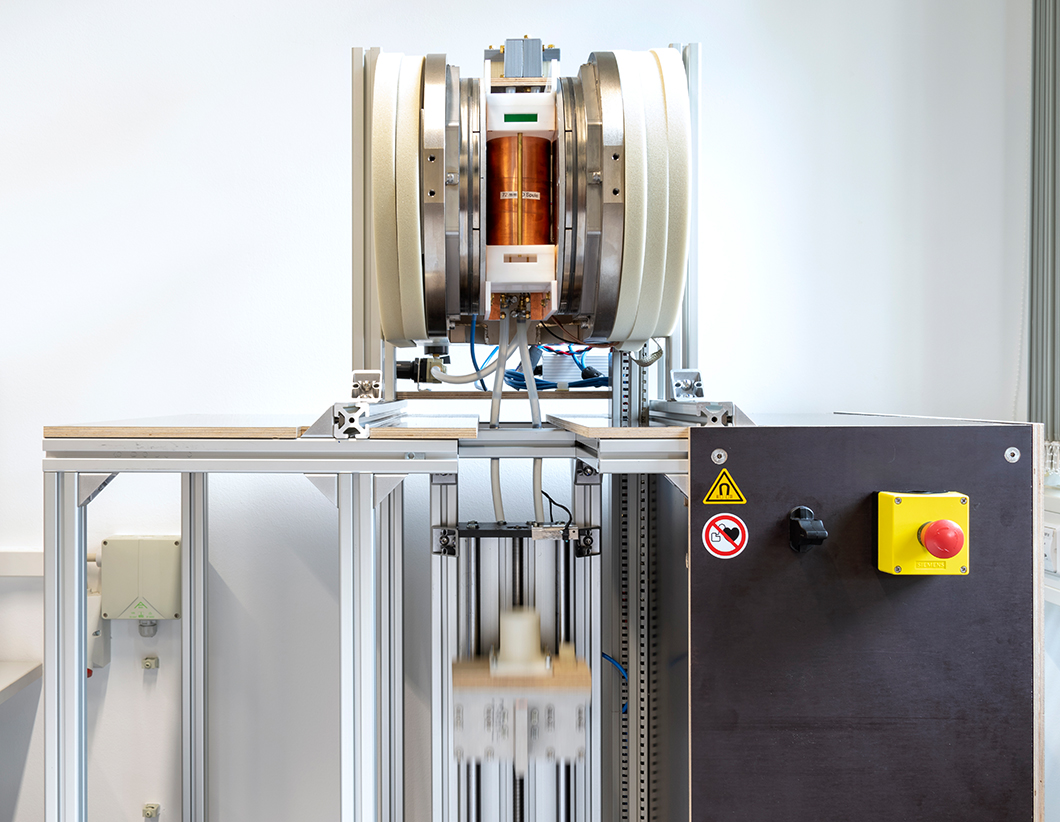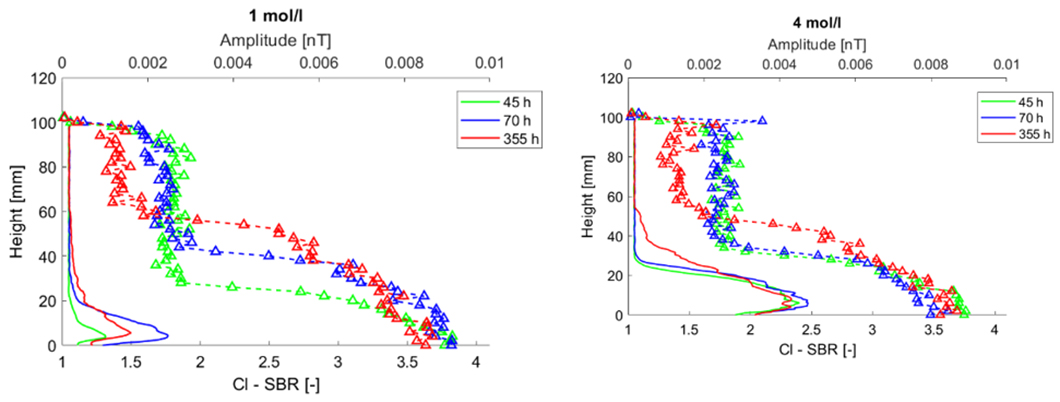
Source: BAM
Project period
01/07/2021 - 31/01/2025
Project type
BAM project
Project status
Ongoing
Description
In our work, we use a combination of nuclear magnetic resonance (NMR) and laser-induced breakdown spectroscopy (LIBS) to investigate the transport characteristics of building materials featuring completely different pore systems.
Location
Bundesanstalt für Materialforschung und -prüfung (BAM)
Unter den Eichen 87
12205 Berlin
Building materials before shell of a building Source: BAM
Damage processes in building materials are largely influenced by internal transport processes of water and ions. In order to understand these transport processes, especially in their mutual dependence, the transport behaviour of different materials is investigated. A combination of NMR tomography and LIBS is used to monitor the coupled transport mechanisms. If this approach yields precise and reliable results even allowing to calculate transport coefficients (to be used in probabilistic life cycle assessment models), it could also help to facilitate the development of new, more environment-friendly building materials in the future.
Source: BAM
Source: BAM
Different building materials are investigated during capillary suction and rapid migration tests for this project. We include sandstones, cements, mortar and even concretes with recycled aggregates. The samples are sealed with epoxy resin to allow one-directional fluid flow of different sodium chloride brines. The transport of moisture and chloride ions is then measured using NMR and LIBS and the results compared to classical potentiometric laboratory testing.
Source: BAM
Bundesanstalt für Materialforschung und -prüfung (BAM)
Department Non-Destructive Testing
COMIT - Characterization of moisture and ion transport in porous building materials using NMR and LIBS
Understanding transport processes in building materials is important to characterize their durability and allow for life cycle assessment simulations. Moisture and especially chloride ions are of crucial importance, but it is time-consuming and expensive to determine their transport spatially resolved and in relation to each other. In our work, we use a combination of nuclear magnetic resonance (NMR) and laser-induced breakdown spectroscopy (LIBS) to investigate the transport characteristics of building materials featuring completely different pore systems. Also, we use different pore fluid concentrations and try to determine material specific transport coefficients based on our observations.
We carry out capillary suction and ion migration experiments on CEM I as well as CEM II/A, CEM III/B, CEM II/C and CEM VI or even recycled concrete samples and monitor the moisture uptake by non-destructive, layer sensitive NMR measurements. Subsequently, the samples are split vertically to investigate the chloride ion ingress with high spatially resolved LIBS measurements. This way we can study the material specific transport characteristics of moisture and salt depending on the individual pore-size distributions. The first experiments clearly showed that the two penetration fronts move with different time constants. Moreover, the concentrations of the used solutions play an important role. In the figure is shown that in a mortar sample (max. aggregate size 2 mm) a sodium chloride concentration of 1 mol/l penetrates more slowly than the same fluid with a concentration of 4 mol/l. The moisture fronts seem to penetrate somewhat quicker though, when the ion concentration is lower.

Results of capillary suction experiments using mortar samples and two different sodium-chloride solutions (left: 1 molar NaCl solution; right: 4 molar NaCL solution). The moisture fronts (triangles) are measured with NMR and the chloride fronts (solid lines) with LIBS.
Source: BAM, Department Non-destructive Testing
Funding
The HyBeMa project is funded through internal BAM funds.


